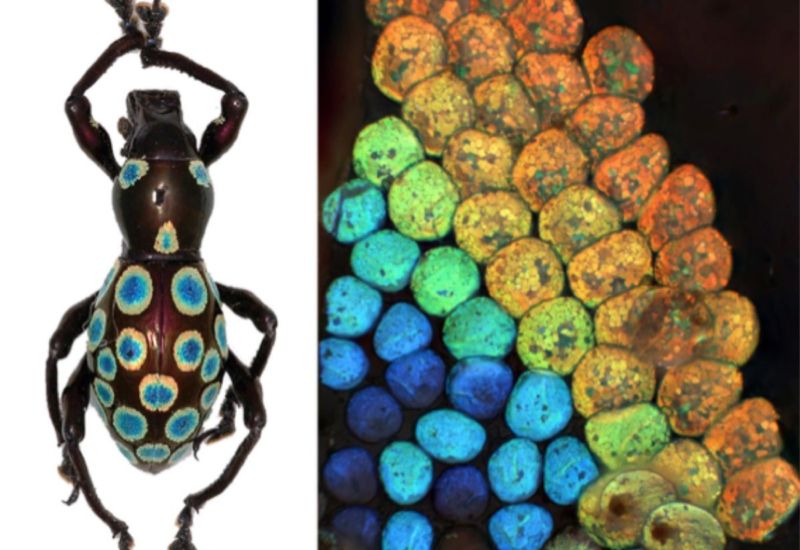“Rainbow” weevil could hold the secret to generating nature’s colors in the lab
Ars Technica » Scientific Method 2018-09-23

Enlarge / The colorful spots of a rainbow weevil (left) as seen through a bright-field light microscope (right) (credit: Bodo D. Wilts)
There are many insects that boast one or two bright colors on their cells. But the so-called "rainbow weevil" is unique because it has many different colored spots. Now researchers from Yale-NUS College and the University of Fribourg in Switzerland have discovered the mechanism behind this rainbow effect, and it is very like the way that squid or cuttlefish shift color for camouflage. They described their results in a recent paper in the journal Small.
Nature produces color in its creatures in various ways. For instance, the bright colors in butterfly wings don't come from any pigment molecules but from how the wings are structured. The scales of chitin (a polysaccharide common to insects) are arranged like roof tiles. Essentially they form a diffraction grating, except photonic crystals only produce certain colors, or wavelengths, of light, while a diffraction grating will produce the entire spectrum, much like a prism.
This is a naturally occurring example of what physicists call photonic crystals, or photonic bandgap materials. That's because photonic crystals are "tunable," precisely ordered in such a way as to block certain wavelengths of light while letting others through. Alter the structure by changing the size of the tiles, and the crystals become sensitive to a different wavelength. Even better (from an applications standpoint), the perception of color doesn't depend on the viewing angle.